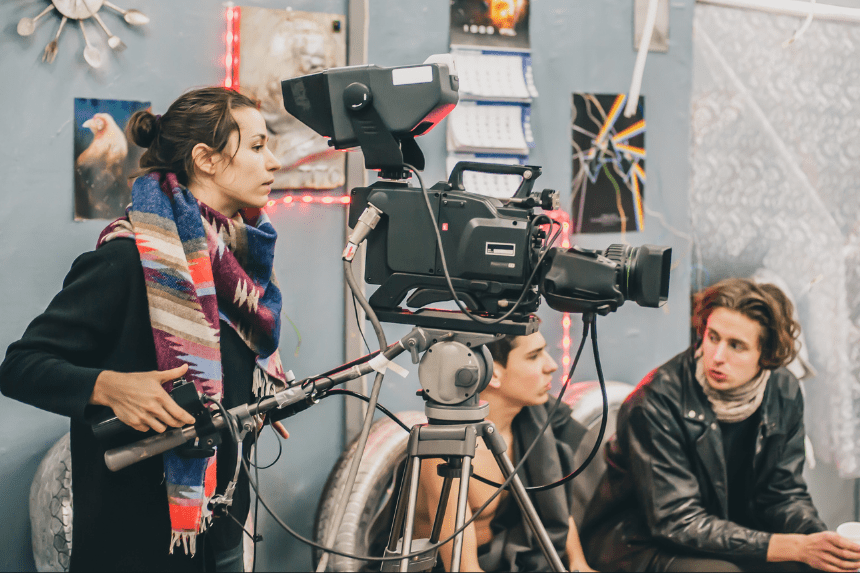When director Dearbhla Walsh began her career in the 1980s, working in film in Ireland seemed almost impossible. The industry was underdeveloped, lacking funding, infrastructure, and opportunities. Young creatives struggled to find their place.
- What Financial Incentives Are Driving This Boom?
- How Has Local Talent Propelled the Industry Forward?
- What Kind of Stories Is Ireland Telling?
- How Are Irish-Language Productions and Animation Contributing?
- How Is Ireland Preparing for the Future?
- Why Should the World Pay Attention to Irish Filmmaking?
- Conclusion: What Comes Next for the Irish Film Production Sector?
There was no work in Ireland,” Walsh recalls. “To aspire to be a director was almost a fantasy.”
Now, decades later, the Irish film production sector is thriving. It contributes over €1 billion annually to the national economy and directly supports more than 10,000 full-time jobs, according to Screen Ireland, the country’s national agency for film and TV development.
This transformation wasn’t accidental. It came from a long-term commitment to building a sustainable screen sector through smart policy, generous tax breaks, training programs, and a focus on nurturing talent from within.
What Financial Incentives Are Driving This Boom?
A major reason behind Ireland’s rising profile in the global entertainment world is its competitive tax incentives. The government offers a standard 32% tax credit on eligible production expenses. For smaller budget productions, this can increase to 40%, a change implemented in May 2025 to further support local filmmakers.
These incentives place Ireland among the most cost-effective locations globally. In comparison, California offers a tax credit of only 20%. That gap makes a significant difference to international studios weighing filming locations.
Actor Rob Lowe highlighted this advantage, stating that it’s “cheaper to bring 100 people to Ireland” than to film in Los Angeles. His American game show The Floor is produced in Bray, just 20 kilometers south of Dublin.
To complement these breaks, Screen Ireland’s 2025 budget was increased to €40.85 million, its highest level ever. This consistent financial support enables Irish and international filmmakers to plan, produce, and distribute high-quality content from Irish soil. Read another article on the Religious School Abuse Scandal in Ireland
How Has Local Talent Propelled the Industry Forward?
The availability of funding and tax credits is just one part of the puzzle. The emergence of a confident, highly skilled generation of Irish talent has been equally transformative.
Dearbhla Walsh, now internationally known, returned home to direct Apple TV+’s hit show Bad Sisters, for which actress Sharon Horgan received consecutive Emmy nominations.
It was incredibly exciting for me to come home and tell a story that I felt I understood,” Walsh shares.
Another leading voice is Alan Moloney, co-founder of Big Things Films with Oscar-winning actor Cillian Murphy. Their studio has been behind acclaimed projects like Small Things Like These and the upcoming Netflix drama Steve.
Now we have an industry that is competing at the highest level,” Moloney explains. “The Irish film production sector is punching far above its weight.”
What Kind of Stories Is Ireland Telling?
Ireland’s storytelling has evolved. The country no longer focuses only on rural dramas or introspective themes. Instead, Irish filmmakers are creating genre-spanning narratives that resonate globally.
Ruth Treacy, producer at Tailored Films, emphasizes the shift:
It’s not just about looking inward anymore. It’s about creating stories that look outward at the world.”
Treacy’s company has delivered diverse content like Bring Them Down and The Apprentice, the Oscar-nominated 2024 biopic of Donald Trump. Meanwhile, Ireland’s first-ever Irish-language horror film, Fréwaka, marks the genre’s expansion into new creative territory.
Additionally, Irish-language films have gained unprecedented international attention. The Quiet Girl [An Cailín Ciúin] became the first Irish-language film nominated for an Academy Award, highlighting the power of regional voices on a global stage.
How Are Irish-Language Productions and Animation Contributing?
Irish-language storytelling is undergoing a breakthrough. Ciarán Charles Ó Conghaile, co-founder of Fíbín Films, is behind Crá, an Irish-language crime drama that became the first to air on the BBC and has since been sold to international markets.
There’s a richness to the Irish language,” says Ó Conghaile. “But I think it’s not about the language — it’s the storytelling that draws people in.”
Ireland’s success isn’t limited to live-action. Its animation sector is flourishing too, employing over 2,500 full-time professionals. Studios such as Cartoon Saloon, known for films like Wolfwalkers and The Breadwinner, have received global acclaim and multiple Oscar nominations.
This growth in animation has made the Irish film production sector even more versatile, opening doors to young animators and writers eager to contribute to both local and international content.
How Is Ireland Preparing for the Future?
With surging demand, plans are underway to expand production capacity. A consortium led by Alan Moloney is developing what will be Ireland’s largest film and TV studio, located in Dublin. This state-of-the-art facility will attract even larger-scale productions in the coming years.
However, the road is not without challenges. In May 2025, former U.S. President Donald Trump proposed a 100% tariff on foreign-made films, which, if enacted, could affect international partnerships.
Despite this, industry leaders remain confident.
We came through Covid intact. We came through the writers’ strike intact. We’ll come through this too,” says Moloney.
Treacy adds that the industry should not overreact:
There’s a big chance the tariff threat won’t even come to pass. We shouldn’t destabilize the industry by panicking.”
Why Should the World Pay Attention to Irish Filmmaking?
The world is starting to take note. With strong government support, a wealth of storytelling talent, and increasingly sophisticated infrastructure, the Irish film production sector is no longer playing catch-up. It is setting the pace for other small nations seeking to compete in global cinema and television.
Rebecca O’Flanagan, producer at Treasure Entertainment, links this success to Ireland’s deep-rooted narrative culture:
I don’t want to go too far into the cliché of saints and scholars, but I do think Ireland is a naturally creative nation.”
Indeed, from local thrillers to global Netflix hits, Ireland is exporting stories that entertain, move, and inspire audiences worldwide.
Conclusion: What Comes Next for the Irish Film Production Sector?
The Irish film production sector stands as a model of what consistent investment, inclusive storytelling, and cultural confidence can achieve. Ireland’s screen industries have matured into a global force—resilient, forward-thinking, and bursting with potential.
As the next wave of Irish films, shows, and animation hits screens across the world, one thing is certain: Ireland’s moment is not temporary. It’s just beginning.








